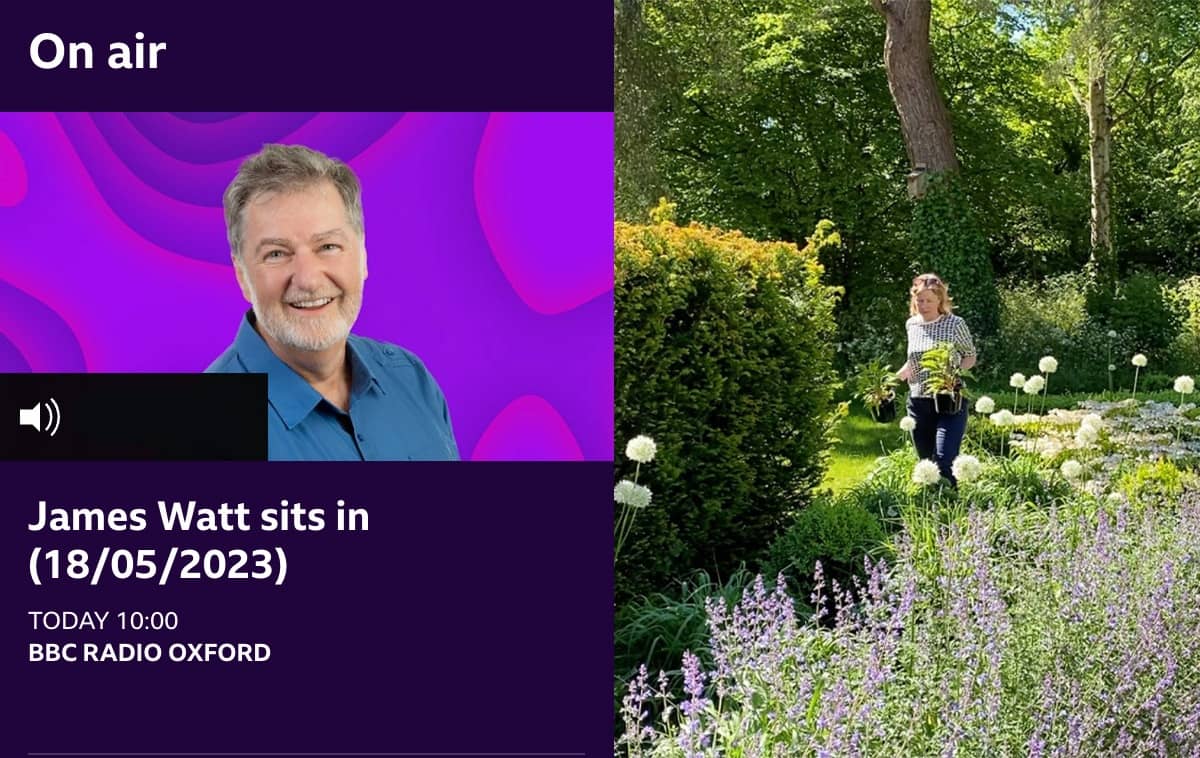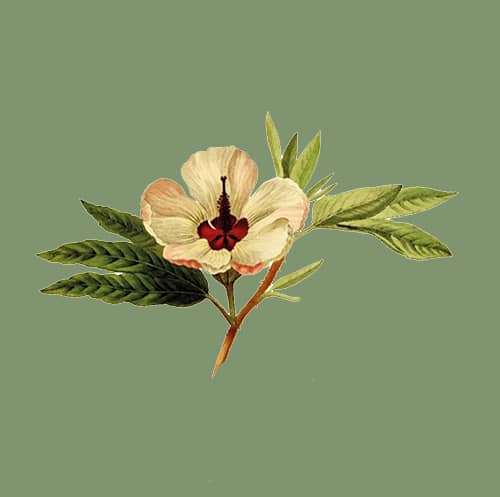With around a third of the gardens at RHS Chelsea Flower Show showcasing weeds and wildflowers at this year’s show, BBC Radio Oxford got in touch to talk about rebranding them as resilient plants and their changing role in the garden.
Our Director and Planting Designer – Samantha – went on-air with presenter – James Watt – to discuss. Listen in below or read on for more:
Samantha, should weed-free gardens be a thing of the past?
So pleased to be with you. We’ve definitely evolved our relationship with gardens and people are growing in their understanding of the holistic cycles of nature, in particular, pollinators. We help create healthy gardens with people, plants and a good nectar score.
A weed is a vague term for a wild plant in the wrong place, but now we are more industrious in the way we improve the habitat, and yes, that includes understanding wild plants and how they feed into the future.
So, are there good weeds and bad weeds?
Yes, absolutely there are invasive weeds such as bindweed, couch grass and ground elder that can take hold with vigorous growth and would not be good bedfellows in a well-tended border so, we simply dig them out. Often weeds are considered competition for the plants that we have spent money on it’s the tendency to self-seed and blanket cover a border.
However, there are surprising plants that can be labelled weeds, and yet are enjoyable. Take Wild Garlic, for example, in an understory of planting, amongst the dry shade of mature trees, with its impressive white flowers. You just need to keep it in check. Others include Elderflower and Foxgloves, which are highly attractive to wild native pollinators.
We plant healthy, biodiverse gardens, layering the planting recipe, so that it harmonises with the owner’s wishes and brings a bountiful garden.
How should we tackle the bad weeds to remove them from the garden?
If you want to remove a plant it’s best to dig them out by the roots. Remove the spent flowers before they set seed. This year, The RHS and RHS Chelsea Flower Show are highlighting ‘Pause and Take a Second Look’, so when you’re next in the garden, if you’re not sure of a plant looking up at you, pop onto a plant-identifying app such as PlantNet and explore what the plant is. You may choose to leave it as a wildflower.
For example, a Foxglove will happily co-exist within a border with cultivated plants or it might turn out to be frothy cow parsley, as we see in countryside hedgerows. Violets create pretty ground cover and wild poppies look beautiful in a space where you would like to blend a natural habitat.
How can we use weeds to create a natural habitat for wildlife?
When we start garden care with a new owner they may introduce our horticulturalists to a forgotten area away from the more formal and well-tended gardens. Here, we’ll bring together a well-placed scheme of wildflowers, dead wood and an area of water that is great for pond-dipping with children.
Buttercups open even on cloudy days and daisies provide open blooms, which provide platforms that are easy to take the nectar from, especially for short-faced bees.
Dead Nettle or Sweet Nettle is a non-stinging nettle with lots of white flowers. They have a drop of nectar in each flower and a taste of sweet honey. They are home to seed-eating birds and when left to grow, can then be cut down at the end of their lifecycle to produce high-nitrogen fertiliser for the following spring. Here the humble weed gives back to the owner through biodiversity, fertiliser, ground cover and a feeling of wholeness; that you’re contributing to the natural way of things.
What weed and flower combinations work well together?
For wildflowers in the garden and landscape, our planting designers and soft landscapers choose wildflower mixes and plant swathes within lawns; planting in the margins along hedgerows, orchards and meadows. These may include a pastel euphoria of betony and tufted vetch, which will happily rub shoulders with cultivated plants, and yet, are termed weeds. They were recently used in the Coronation Meadow at Royal Botanic Gardens, Kew – Wakehurst.
The UK has lost 97% of its wildflower meadows since 1930, so we sow with seeds and plugs or prepare and lay enriched native wildflower turf (non-native wildflowers can alter the local soil chemistry and disturb the microbes present).
You can really help too. What better than to know you’ve created a thriving ecosystem that can be a paradise away from the stresses of daily life with more biodiversity?
Bees are one of the main winners too, they are the stewards of our food supply and wildflower meadows provide a season-long food source for them, not to mention other pollinators, like birds, butterflies, grasshoppers and newts. Wildflower meadows or lawns give bees respite in the hot summer months too, as they are cooler and give the bee a place to take a break. Adding swathes of bulbs too in lawns provides early rewards for bees.
For those without a garden, but who may have a window box, what do you recommend?
I would recommend an ‘edimental’ window box, filled with edibles and ornamentals. Pick your most loved herbs to cook with (we have thyme, rocket and parsley), pop them in the window box with some edible white violas (great in salads and to decorate baked goodies or pop them in the freezer to create ice cubes for drinks).
You can sprinkle radish seeds and grow them in under four weeks. Add a pot of rosemary and lavender for fragrance, which the bees adore and lots of trailing alpine strawberries, along with the self-seeding and daisy-like Erigeron.
If you have a sunny windowsill you can grow chillies, peppers, and basil is super easy from seed.
If we want to find out more about wildflowers and weeds, where can we look?
Explore our website or social media channels (buttons in our header and footer). There are how-to videos, plenty of gardening knowledge and links to further reading.
Check out Wildflower Magazine for more information and inspiration on wild and native plants.
Discover our landscaped gardens and horticultural work or simply come and say ‘hello’


